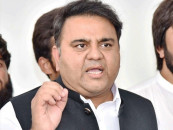Renewable potential: ‘Investment in clean energy technologies needed’
Power sector leads broad reorientation of energy investment, IEA report says

Power sector leads broad reorientation of energy investment, IEA report says
The renewable energy sector of the country attracted foreign investment of over $3 billion during the last one year due to robust potential, lucrative tariff structures and bankable security documents.
“The government took some pragmatic steps to harness the available renewable energy potential, diversify its energy mix, and ensure energy security and sustainable development and a detailed resource assessment of wind, solar and biomass was carried out through World Bank assistance,” Dr Qamaruz Zaman Chaudhry, a research scientist and climate change expert, told The Express Tribune.
According to a government official, Alternative Energy Development Board (AEDB) issued over 25 letters of interest to various solar projects with cumulative capacity of 663MW. The Punjab government issued the same for 600MW projects, while financing for 300MW solar power project has already been done. Quaid-e-Azam Solar Park already supplies 100MW electricity to the national grid, while 300MW more would be added to the system this year. The park would generate total 1,000MW by 2017. The AEDB was also pursuing 35 solar photovoltaic (PV) power projects of cumulative capacity of approximately 1,111.44MW. Some 250MW solar projects were also included in China-Pakistan Economic Corridor.
A new International Energy Association (IEA) report -- World Energy Investment 2016 -- released a couple of days back shows the electricity sector leading a broad reorientation of energy investment. However, it advised for more investment to meet climate targets and address energy security.
In a detailed analysis of investment across the global energy system, the IEA said that global energy investment fell by eight per cent in 2015, with a drop in oil and gas upstream spending outweighing continued robust investment in renewables, electricity networks and energy efficiency.
Total investment in the energy sector reached $1.8 trillion in 2015, down from $2.0 trillion in 2014.
The report says that with energy supply spending of $315 billion, China was once again world’s largest energy investor last year in its efforts in building up low carbon generation and electricity networks, as well as implementing energy efficiency policies.
The report further reveals that investment in the United States’ energy supply declined to about $280 billion in 2015, falling nearly $75 billion, due to low oil prices and cost deflation, representing half of the total decline in global energy spending. The Middle East and Russia emerged as the most resilient regions to spending cuts. Renewable energy investments of $313 billion accounted for nearly a fifth of total energy spending last year, establishing renewables as the largest source of power investment. While spending on renewable power capacity was flat between 2011 and 2015, electricity generation from the new capacity rose by one-third, reflecting the steep cost declines in wind turbines and solar PV. The investment in renewable power capacity in 2015 generates more than enough to cover global electricity demand growth.
Technology innovations boosted investment in smart grids and storage, which are expected to play a crucial role in integrating large shares of wind and solar. While grid-scale battery storage investment expanded tenfold since 2010, their value is predominantly to complement the grid, which continues to absorb much larger investment.
Global gas-fired power generation investment declined by nearly 40 per cent. Asian markets continued to favour investment in coal power. Investment activity in European gas power remained muted despite large retirements anticipated in the next decade.
With investment rising six percent, energy efficiency spending was robust in 2015 due to government policies such as minimum standards that cover a rising share of new buildings, appliances and motor vehicles.
In certain countries, lower oil prices slowed the trend towards more fuel efficient vehicles, most notably in the United States, where the rate of improvement in efficiency was two-third lower than that in recent years.
Published in The Express Tribune, September 17th, 2016.



















COMMENTS
Comments are moderated and generally will be posted if they are on-topic and not abusive.
For more information, please see our Comments FAQ